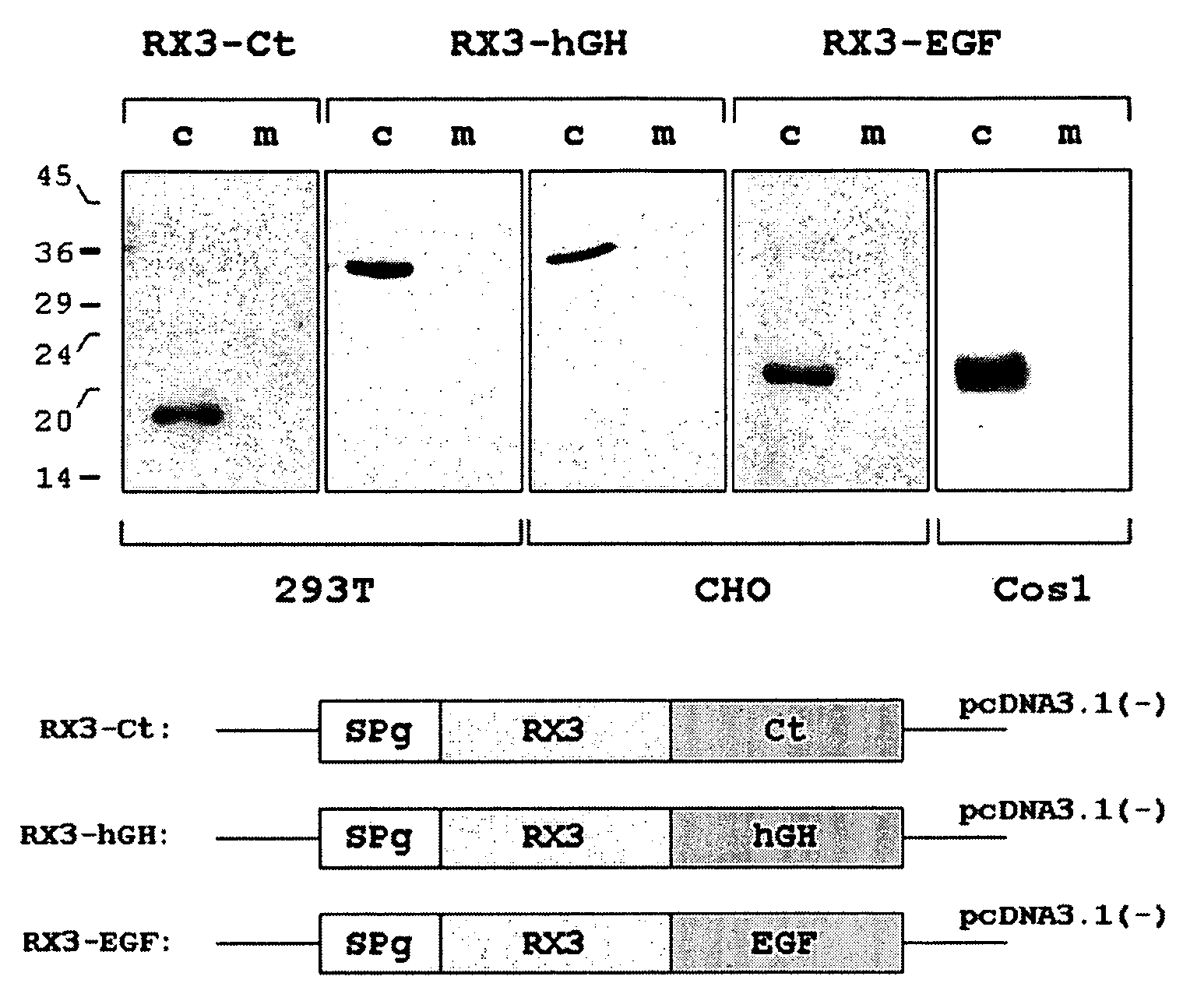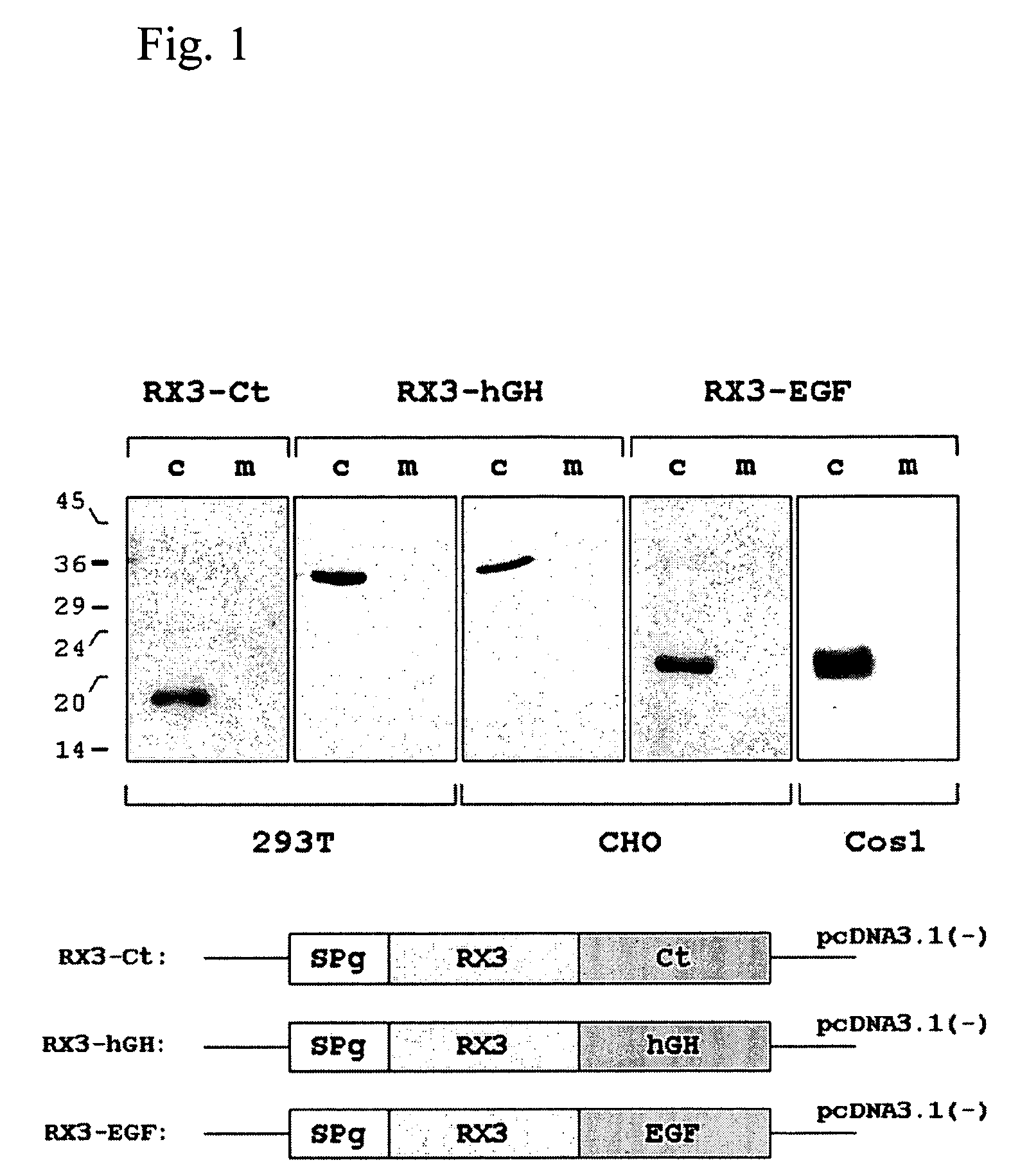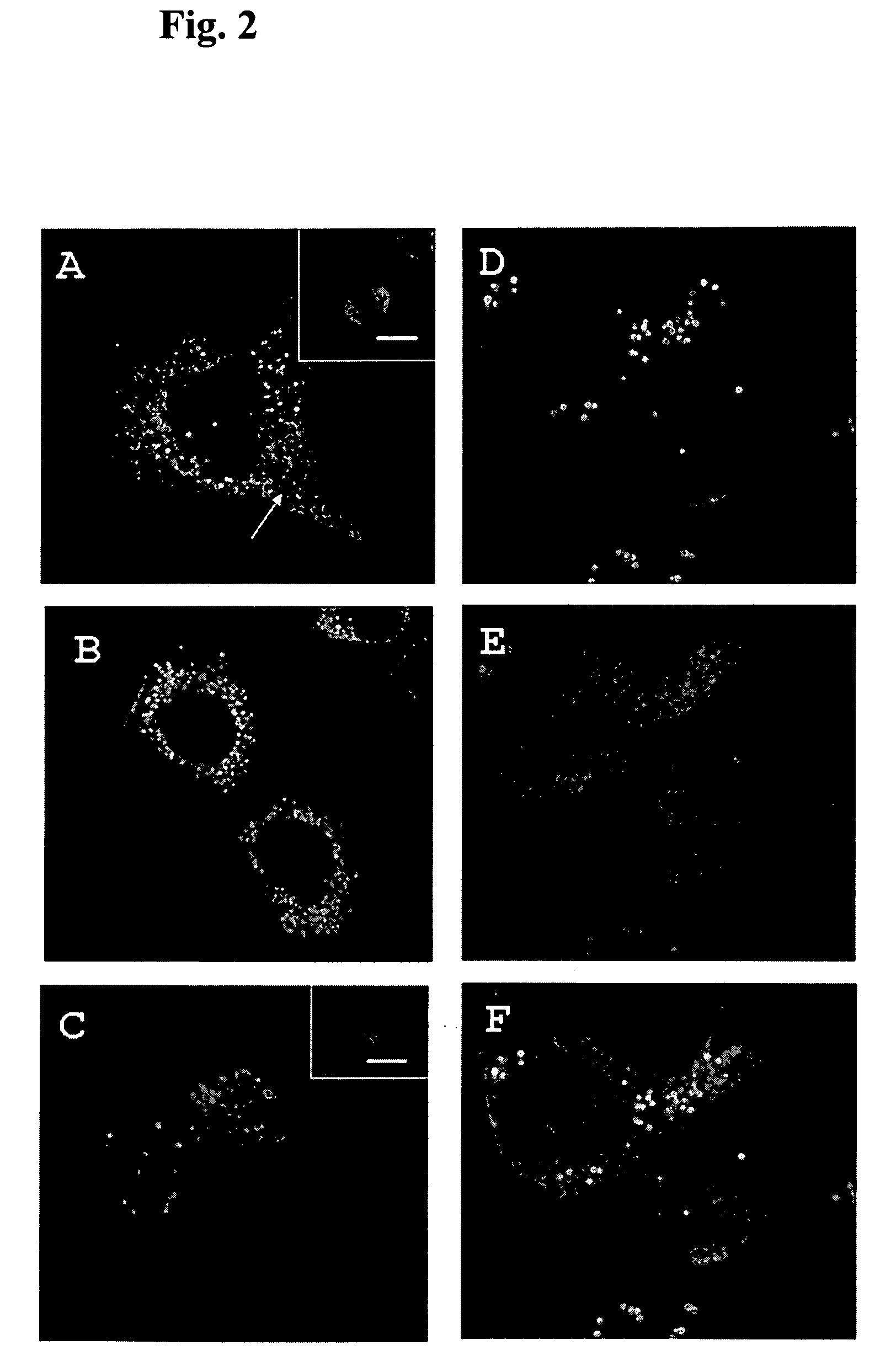Production of proteins
a technology of recombinant proteins and peptides, which is applied in the direction of growth hormones, peptide sources, hormone peptides, etc., can solve the problems of yeast not being a good model to study zein interactions and invalidating industrial applications, and achieves the effect of readily obtainable and purifiable recombinant proteins
- Summary
- Abstract
- Description
- Claims
- Application Information
AI Technical Summary
Benefits of technology
Problems solved by technology
Method used
Image
Examples
example 1
Accumulation of Fusion Proteins in Transfected Mammal Cells
[0064] The synthetic genes corresponding to the mature calcitonin (Ct) and EGF sequences as well the cDNA encoding the hGH sequence, were fused to the N-terminal gamma-zein coding sequence RX3 (WO2004003207) and were introduced into the vector pcDNA3.1 (Invitrogen) to obtain the constructs p3.1RX3Ct, p3.1RX3EGF and p3.1RX3hGH. These constructs that code for the fusion proteins RX3-Ct, RX3-EGF and RX3-hGH, were introduced in 293T, Cos1 and CHO mammal cultured cells by the lipofectamine based transfection method (Invitrogen). 293T and Cos1 cells transfected with plasmid pECFP-N1 (Clontech) containing the gene sequence of an enhanced cyan fluorescent modified GFP, were used as controls.
[0065] The accumulation of fusion proteins in the transiently transfected cells was analyzed by Western blot, using antibodies raised against gamma-zein. After 44 hours of transfection, total soluble proteins were extracted with buffer A (100 m...
example 2
Subcellular Localization of Fusion Proteins in Transfected Mammal Cells
[0068] In determine if the N-terminal gamma-zein sequence RX3 was able to induce recombinant protein body-like assemblies in mammal cells, the localization of RX3-Ct and RX3-EGF fusion proteins was analyzed by immunocytochemistry using confocal microscopy. Transfected cells were fixed for 10 minutes in 3.7% paraformaldehyde and after washing with saline phosphate buffer, were incubated with gamma-zein antiserum (dilution 1 / 700) for 1 hour. Non-immune serum was used as control. The primary antibodies were detected with anti-rabbit antibodies conjugated to Alexa Fluor 488 or Alexa Fluor 555 dyes (Molecular probes).
[0069] Micrographs from the transfected cells were obtained by using a confocal laser scanning microscope (Leica TCS SP, Heidelberg, Germany) fitted with spectrophotometers for emission band wavelength selection. Green fluorescent images were collected at 488 nm excitation with the Argon ion laser by us...
example 3
Accumulation of Fusion Proteins in Transformed Yeast Cells
[0073] The sequences encoding EGF and hGH, were fused to the N-terminal gamma-zein coding sequence RX3 (WO2004003207) and were introduced into the vector pYX243 (R&D systems) to obtain the constructs c117 and c118. These constructs that code for the fusion proteins RX3-EGF and RX-hGH were introduced in Saccharomyces cerevisiae.
[0074] Expression analyses were made by growing the transformants in galactose-containing medium and equivalent amounts of both, cells and media, were analyzed by SDS-PAGE and immunoblot by using specific antibodies against the recombinant expressed proteins. As can be seen in FIG. 3A both RX3-EGF (lanes c117) and RX3-hGH (lanes c118) fusion proteins accumulated in the yeast cells, no traces of protein being detected in the media.
[0075] Accumulation of hGH and hGH-derived fusions was also studied in the yeast Pichia pastoris that was transformed with constructs c135 and c121 (coding for the fusion RX...
PUM
| Property | Measurement | Unit |
|---|---|---|
| density | aaaaa | aaaaa |
| diameters | aaaaa | aaaaa |
| temperature | aaaaa | aaaaa |
Abstract
Description
Claims
Application Information
 Login to View More
Login to View More - R&D
- Intellectual Property
- Life Sciences
- Materials
- Tech Scout
- Unparalleled Data Quality
- Higher Quality Content
- 60% Fewer Hallucinations
Browse by: Latest US Patents, China's latest patents, Technical Efficacy Thesaurus, Application Domain, Technology Topic, Popular Technical Reports.
© 2025 PatSnap. All rights reserved.Legal|Privacy policy|Modern Slavery Act Transparency Statement|Sitemap|About US| Contact US: help@patsnap.com



